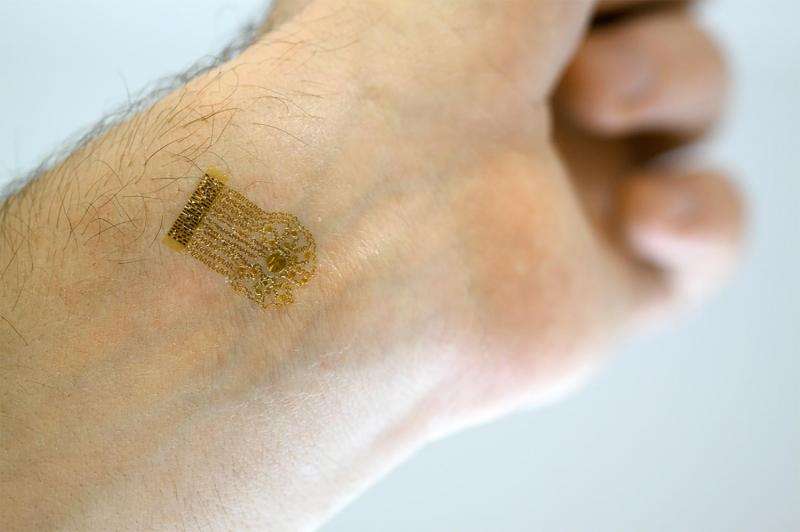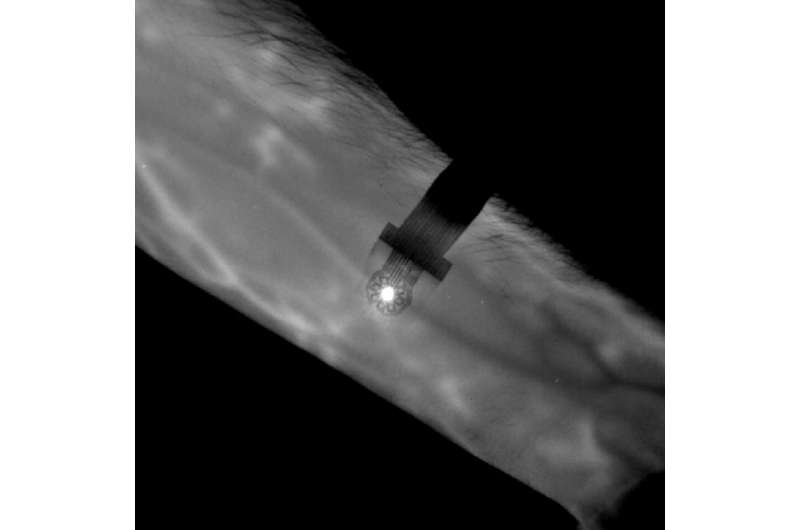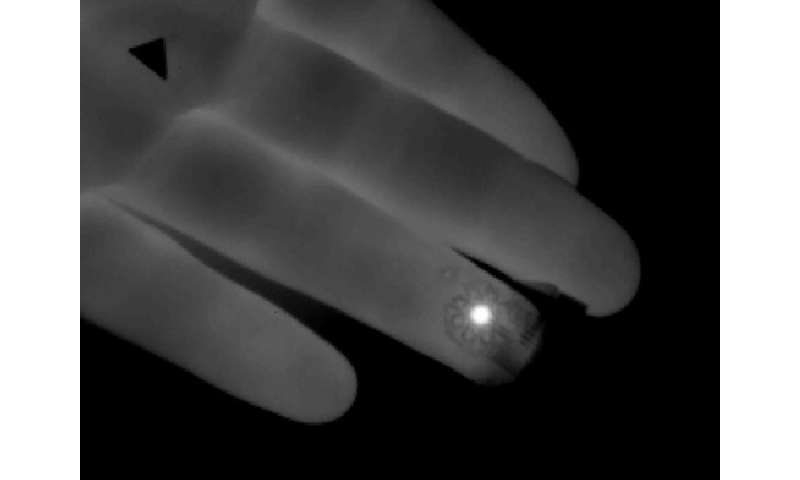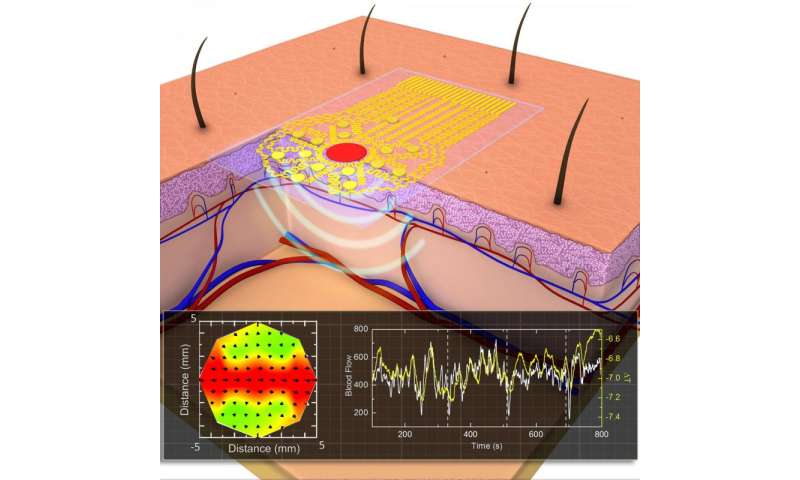November 2, 2015 report
Thin film device able to measure blood flow in new way

(Phys.org)—A team of researchers with members from institutions in China and the U.S. has announced the development of a thin film device that can be affixed to the skin to measure blood flow. In their paper published in the journal Science Advances, the team describes their device, how it works and their hopes for making it smaller and tether-free.
As it stands now, people with blood flow problems who need testing done, must go to a clinic where a bulky device is applied to their body, and then they must sit still for a period of time while the device operates. This approach, the researchers note, has one major drawback—an inability to measure blood flow while the body is behaving normally. For that reason, they have created what they call a noninvasive epidural device for measuring blood flow. It can be affixed to the skin (using van der Waals forces) while the patient is engaging in normal everyday activities—up to a point. It has a tether that supplies power and carries readings from the device to a computer, which impedes movement. But the researchers are optimistic that they will be able to eliminate the tether, offering future patients around-the-clock blood flow monitoring.
The device is made of chromium, copper and a very thin layer of silicon. It works by detecting nearly imperceptible changes in heat (0.01 degree Celsius) as it moves from the device into blood moving below the skin. Testing thus far has been done on human volunteers who have had it placed on the skin of their wrists—the results were compared with measurements take at the same site for the same patient using conventional methods—the researchers report the outcomes were nearly identical. They report also that the new device worked just as well when volunteers were using an aerobic stepper or when lying down.

If the device can be made smaller and tether-less, the researchers believe it could be worn by people with diabetes, hardening of the arteries, or other diseases that impact blood flow, offering doctors and patients real-time information that could be vital to preventing limb-loss, heart attacks and stroke. They believe it is also possible that a similar device could one day be affixed to organs inside the body to provide even better data.
-

An infrared thermal image of the epidermal device as it monitors blood flow changes that occur on a fingertip. The central actuating element, which is undetectable by the user and appears as a white spot in the center of the epidermal device, allows for the non-invasive monitoring of blood flow by monitoring minute changes in spatial distributions of temperature. Credit: University of Illinois at Urbana-Champaign -

A 3-D rendering of the epidermal device placed on skin above a blood vessel. The soft, stretchable epidermal device laminates onto skin like a temporary tattoo to perform non-invasive, real-time mapping of blood flow changes beneath the skin. Inset graphs show data captured by the device as blood flow change over time (right) and blood flow maps (left). Credit: University of Illinois at Urbana-Champaign and the Beckman Institute
More information: R. C. Webb et al. Epidermal devices for noninvasive, precise, and continuous mapping of macrovascular and microvascular blood flow, Science Advances (2015). DOI: 10.1126/sciadv.1500701
Abstract
Continuous monitoring of variations in blood flow is vital in assessing the status of microvascular and macrovascular beds for a wide range of clinical and research scenarios. Although a variety of techniques exist, most require complete immobilization of the subject, thereby limiting their utility to hospital or clinical settings. Those that can be rendered in wearable formats suffer from limited accuracy, motion artifacts, and other shortcomings that follow from an inability to achieve intimate, noninvasive mechanical linkage of sensors with the surface of the skin. We introduce an ultrathin, soft, skin-conforming sensor technology that offers advanced capabilities in continuous and precise blood flow mapping. Systematic work establishes a set of experimental procedures and theoretical models for quantitative measurements and guidelines in design and operation. Experimental studies on human subjects, including validation with measurements performed using state-of-the-art clinical techniques, demonstrate sensitive and accurate assessment of both macrovascular and microvascular flow under a range of physiological conditions. Refined operational modes eliminate long-term drifts and reduce power consumption, thereby providing steps toward the use of this technology for continuous monitoring during daily activities.
Journal information: Science Advances
© 2015 Phys.org




















